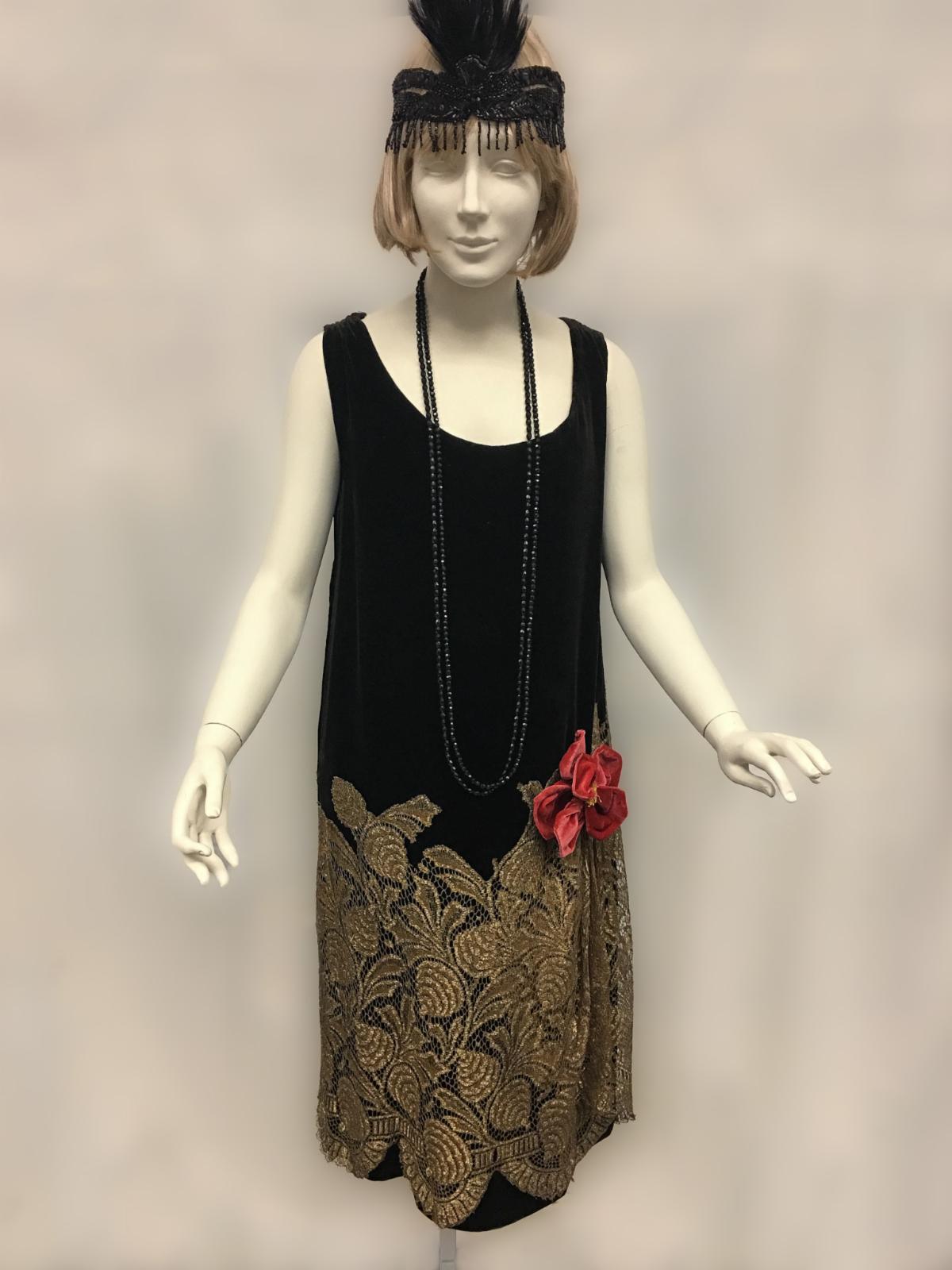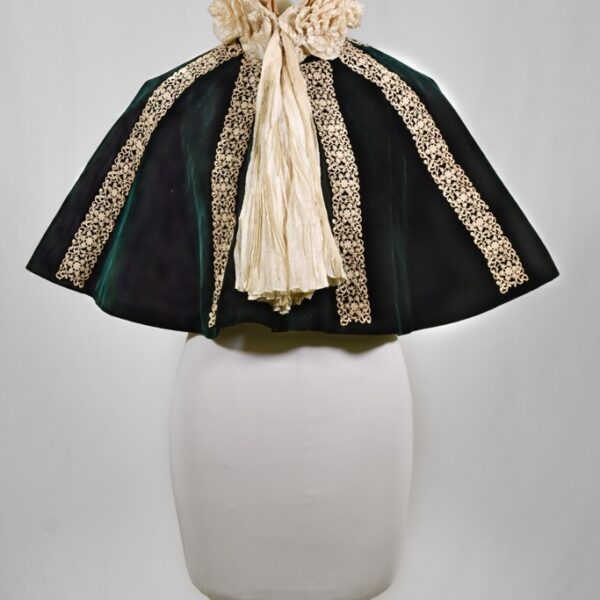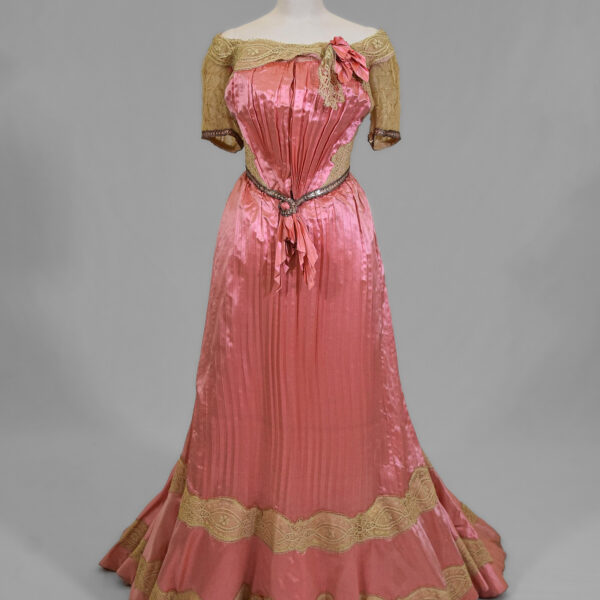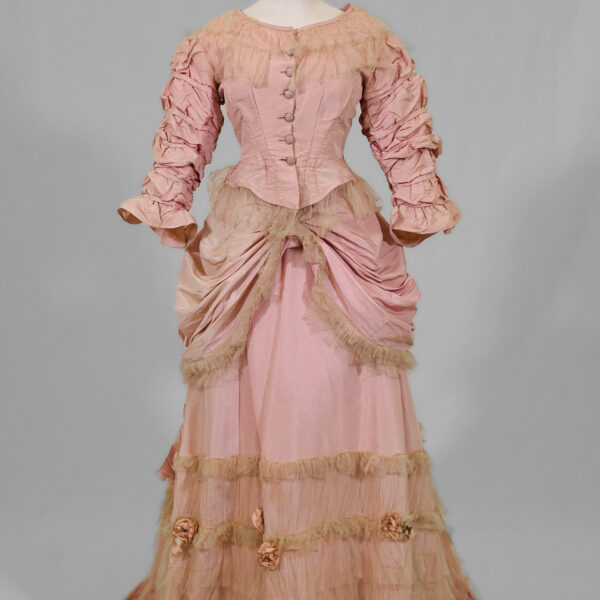
Clothing & Textiles: The Simplicity of 1920s Fashion
This black velvet sheath dress with a gold lace border and red velvet rose c. 1920-24 was donated by longtime New Canaan resident Dorothy Thayer (Mrs. Floyd Noble). In 1913, Dorothy married her husband, Floyd C. Noble, at her parent’s summer residence in Silvermine. The house was beautifully decorated by Stephen Hoyt, the local florist. After the wedding, the two lived on Huckleberry Hill Road, where they raised their two children. The dress was most likely worn by Dorothy herself. (If this sounds familiar, Dorothy was also the owner of the silk leaf-print dress in last week’s e-newsletter, which provides an interesting window into the changing fashions for women within a decade.)
Simplicity in structure was the key to fashion in the 1920s for both daywear and eveningwear, with the latter benefiting from ornate decoration such as beadwork, sequins, and embroidery. The shift dress became the dominant silhouette in women’s clothes, hanging from the shoulder to just below the knee. Waistlines dropped, and Coco Chanel’s Little Black Dress endorsed the validity of black as a fashionable color, and not just appropriate for funerals. Eveningwear also exposed shoulders and backs more than in previous years.
Fun fact! The popular mini-dress trimmed with fringe is not accurate to the 1920s, but rather can be traced back to the 1960s “Flapper” revival of the silhouette. Hemlines in the twenties never rose above the knee and fabrics such as silk, velvet, taffeta and chiffon were all favored above fringe.




